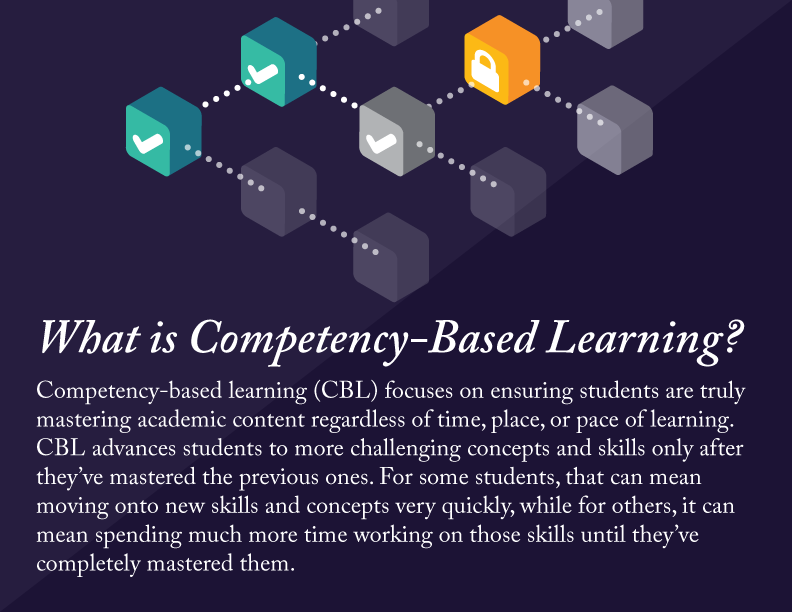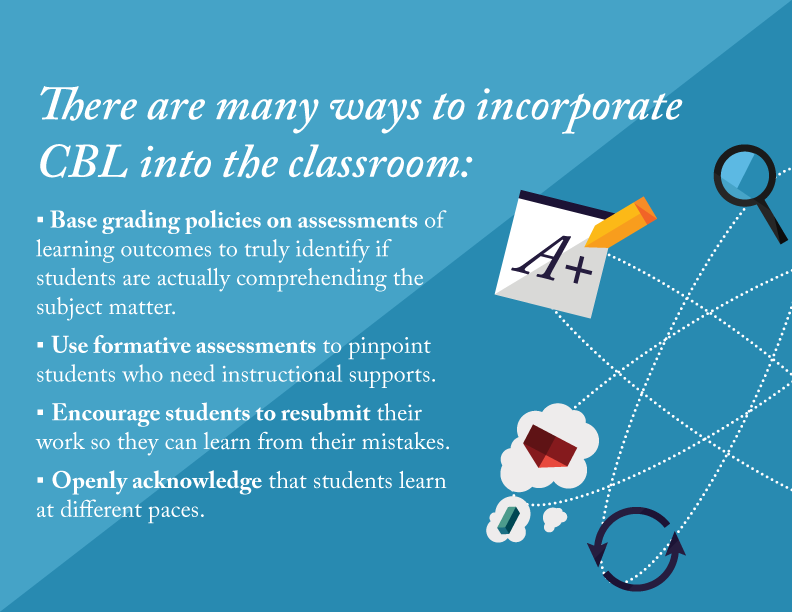
December 13, 2017 8:00 am
Explore the trending paradigm shift that is competency-based learning and incorporate more mastery-based techniques into your classroom, school, and district.
It seems that every day there is a new education buzzword that pushes teachers to change the way they teach, so when people began discussing competency-based learning, educators and policymakers were cautiously optimistic.
But as Illinois’ Department of Education joins New Hampshire, Michigan, and Ohio in incorporating competency-based learning into their policy, the buzz around this new learning strategy is gaining steam.
Here, we define competency-based learning and discuss how can you incorporate the techniques from this new methodology into your classroom, school, and district.
Seen as an alternative to more traditional educational approaches, competency-based learning (CBL) can completely redefine a school’s way of teaching and assessing students. Sometimes called mastery-based, outcome-based, performance-based, or standards-based education, instruction, or learning, CBL focuses on ensuring students are truly mastering academic content regardless of time, place, or pace of learning.
Traditional schools and classrooms utilize an efficiency-centered model, meaning students are classified by age and given a fixed amount of time to master a lesson before moving on to the next.
This can result in students skating by whole sections without fully grasping the material and the ways this material builds on the next unit.
How can a student truly be successful learning the area of triangles if he does not understand the concept of area?

The best way to define competency-based learning is by explaining what it is not.
CBL no longer advances students on an arbitrary timeline, but allows them to move onto the next concept when they have mastered the current one. This allows advanced students to move forward without having to wait for the designated time set in the curriculum, and struggling students can spend as long on a unit as they need to until they reach full understanding.
It does, however, pose some significant changes to the ways students are assessed.
Academic progress should be tracked and reported by learning standard, so educators and parents can know precisely what specific knowledge and skills students have acquired or may be struggling with.
According to the Glossary of Education reform, “instead of receiving a letter grade on an assignment or test, each of which may address a variety of standards, students are graded on specific learning standards, each of which describes the knowledge and skills students are expected to acquire.”
Administrators and teachers can incorporate competency-based learning methods right into the curriculum without completely rewriting it. Educators can break down the competencies that will drive student learning for each listed standard within the curriculum.
These competencies should move beyond content and address process and dispositions, too.
For example:
If one of the standards or outcomes of a geography lesson is to recognize how characteristics of regions affect the history of the United States, the competencies could be to first recognize cultural, economic, and physical characteristics of US regions, then to analyze the relationship between geography and history.
This takes a basic geography lesson beyond memorization and into a broader understanding of how geography has impacted our country and its ties to history.
Obviously, these example competencies will not be achieved in one week, or even one lesson, so it is important to strategically emphasize core standards and their related competencies throughout the year.
Analyzing the relationship between geography and history will be a competency that the class works on in every lesson, and something that students should be reminded of consistently so they can continue to practice to achieve mastery.
After identifying the competencies within the standards, educators must then translate this into student actions and create a rubric that clearly defines how a student can show mastery in that particular competency.
This may take discussion between administrators and curriculum developers, but the idea is that a strong alignment to the competencies is identified by more than a test grade. Rubrics, checklists, and reflection prompts can be extremely helpful in connecting competencies to the assignments within each unit.
Don’t be afraid to have students retake units if they have not fully mastered the associated competency, and help them understand that a retake is not punishment, but a way to ensure that students are the center of learning by allowing them to fully understand concepts before moving on.
Teachers may feel that they have little control since these decisions are made at the district or even state level, but there are ways to incorporate CBL into your classroom with little administrative involvement.

Transitioning to competency-based learning can be difficult, but definitely worthwhile as it creates a classroom that is truly focused on each student as an individual. Since CBL is aimed at ensuring more students learn what they are expected to know, incorporating this method provides educators with more detailed information about student progress.
This allows teachers to identify specific concepts and skills students have not yet mastered, and intervene.
And this is where education technology truly shines.
Programs like UpSmart® can meet students where they are and identify skills, concepts, and standards that they have not yet mastered. Detailed reports provide educators with a granular level of information about each student, much more than they would receive with a simple letter or number grade on a unit test.
Educators can then take that information and intervene to bring students to where they need to be.
Proponents of CBL argue that this method improves the chances that students learn the most important information, concepts, and skills they will need throughout their lives.
It can also help reduce learning gaps or opportunity gaps and provide a more equitable approach to public education. This will reduce or eliminate students advancing to the next lesson, unit, or even grade without acquiring the knowledge and skills they should have to do so.